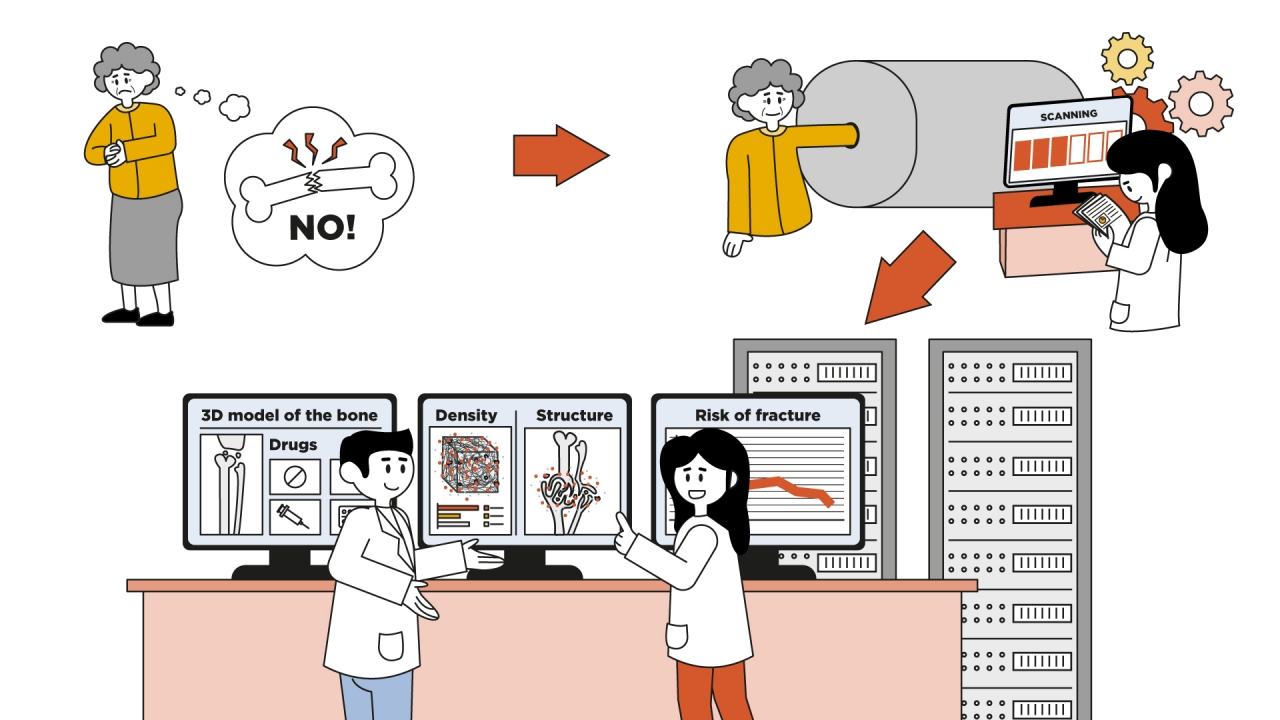Among the 100 people that contributed to the online survey recently run by the VPH institute, Charles Ledoux has been awarded with an illustration to promote his research topic!
First of all we take the chance to thank once again all the people that contribute to the survey that the VPH Institute run in occasion of the VPH2022 conference. The very interesting outcome will be used to guide the future activities of the Institute in terms of positioning and rebranding.
We also would like to congratulate Charles Ledoux, PhD student at the Laboratory for Bone Biomechanics at ETH Zurich, who has won an illustration that represent his research topic.
His research focuses on in silico models of osteoporosis and its treatments. His goal is to develop a tool to quickly and inexpensively model the effect of different treatment types and timings on a patient's bone.

The 9 million osteoporotic fragility fractures that occur every year currently lead to over 400,000 deaths and health care costs in excess of US$80 billion. New strategies for the prevention and treatment of osteoporosis are therefore of the utmost importance. In silico models could provide a fast and inexpensive tool for testing hypotheses on bone remodeling and for informing clinical trial design; in pre-clinical applications, these models have been shown to make patient-specific predictions of bone degeneration and response to therapeutics. Recent advances in medical imaging have enabled the assessment of in vivo bone microarchitecture at successive time points using high-resolution peripheral quantitative computed tomography (HR-pQCT). To date, these modalities have not been combined.
"We developed a novel micro-multiphysics agent-based (micro-MPA) model that integrates mechanics, cell behavior and reaction-diffusion of signaling molecules and parametrized this model to match bone volume fractions and morphometric measures assessed in clinical trials of denosumab treatment over a 10-year period. Rates of cell differentiation, death, replication, and production as well as reaction and diffusion of signaling molecules in this model were based on literature values from in vivo experimental investigations; if unavailable, in vitro data or parameter fitting were use," explains Charles Ledoux.
"Our micro-MPA model takes in well-known pharmacokinetic and pharmacodynamic info for each drug and the 3-D geometry of real patients’ bones assessed using high resolution CT scans at the iliac crest or distal radius and returns patient-specific predictions about changes over time in key clinical metrics that are used to assess fracture risk. We study the effects of different drugs on a single patient using digital twin simulations. We are evaluating the robustness of the micro-MPA model and integrating longitudinal HR-pQCT patient data for model validation."